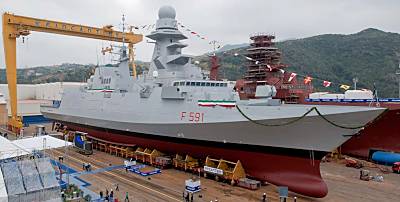WASHINGTON, Jan. 20, 2011 — U.S. Transportation Command and its people got top billing this week during a History Channel premier that examined their task of packing and shipping every single item the U.S. military needs to keep operating.
The Scott Air Force Base, Ill.-based command took center stage during a “Modern Marvels” series show on the technology and ingenuity required to package items for movement.
Air Force Gen. Duncan J. McNabb, Transcom’s commander, described the magnitude of the command’s mission of providing strategic movement for U.S. forces around the world.
“We basically do about 900 sorties a day, 2,600 truck movements. We have 44 ships that are on-loading, off-loading or underway, and about 100 railcar shipments every day,” he said. “If we actually went to full-out war, we would do about three to four times that amount.”
McNabb said ensuring combatant commanders and warfighters have what they need to do their jobs is his top priority, citing Marine Corps Gen. James N. Mattis, commander of U.S. Central Command, and Army Gen. David H. Petraeus, commander of NATO and U.S. forces in Afghanistan, as examples.
“As I tell General Petraeus and General Mattis, my job is to make sure they never worry about this,” McNabb said. “I will get it to them when they need it, and if I’ve got to speed things up, I will take care of that.”
Maintaining that pledge is Transcom’s 1,400-member headquarters staff, which supervises the efforts of 145,000 workers worldwide.
Among them is Air Force Lt. Col. Travis England from the commander’s action group at the 818th Air and Space Operations Center. He explained that the Air Force’s Air Mobility Command support mission is planning missions for crews, filing flight plans, checking weather and notices to airmen, monitoring missions, and looking for problems and chokepoints to solve potential crises before they happen.
“This isn’t rocket science,” he said. “It’s harder.”
Air Force 1st Lt. Troy Barnes of the 436th Aerial Port Squadron described the mission at Dover Air Force Base, Del. The base supplies 75 percent of all cargo through the air transit strategic airlift system.
Air Force Tech. Sgt. Chad Houston, a 436th Aerial Port Squadron cargo processor, walked TV viewers through the procedures used to inspect, weigh and package the hundreds of pallets that arrive at Dover every day for outbound flights. Air Force Capt. Donnell Pittman explained how Transcom tracks the massive number of pallets moving through its system with radio frequency identification tags.
“On any given day, we’ll have approximately 600 tons of cargo. That’s a lot of stuff out there in the system, and that’s a lot of customers wanting to know where their stuff is,” he said. “So every single pallet will have an RF ID tag.”
Once packaging is completed, cargo is stored in a state-of-the-art warehouse, organized by destination, the narrator explained. A full planeload can be retrieved and ready to ship within two hours.
Just before departure time, the crew uses vehicles called payloaders to move the cargo to staging docks. Each payloader can carry up to 60,000 pounds and load seven pallets at a time.
At the staging docks, the crews group the pallets to ensure the best use of space aboard the aircraft. They load the hulking cargo aircraft to ensure not a single inch of space is wasted.
Air Force Senior Airman Louis Ferrara said there’s a lot of gratification in knowing how quickly the cargo he helps to move will arrive where it’s needed in the combat theater.
“If I upload this piece of cargo that has enough full-up armor kit for a Humvee on Friday, on that next Monday that person over in Afghanistan will be putting it onto his Humvee and drive it away safely because of the pallet I uploaded for him,” he said. “We are very grateful for everything that we can do to help the people who are over there fighting for us every day.”
While air transport is the fastest way to move equipment and supplies, Transcom relies on land and sea shipments when the timetable allows.
The port at Baltimore is one of the command’s key packaging points for shipment by sea. There, the “Modern Marvels” crew filmed Chinook helicopters being prepared for shipment, with their 350- to 600-pound rotors removed and stored within the aircraft.
From there, it showed the choppers being lifted by crane aboard the USNS Mendonca operating for the Navy’s Military Sealift Command and lowered into environmentally controlled cargo hold.
“Modern Marvels” opened the Transcom segment of its show describing “one massive global packaging effort [that] literally takes an Army to get the job done.”
“In fact,” it continued, “it takes an Army, Navy, Marine Corps and Air Force. Meet the men of women of U.S. Transportation Command -– U.S. Transcom for short. Their gargantuan task is to pack and ship every single item required for all branches of the American military.”
The entire program is posted on the History Channel’s Modern Marvels website.
Source:
U.S. Department of Defense
Office of the Assistant Secretary of Defense (Public Affairs)

 von
von 